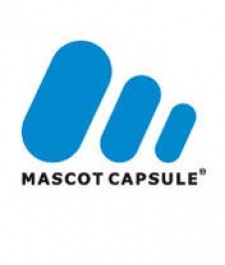With the processing power of the iPhone 3GS pulling at the heartstrings of developers, the middleware companies who supply mobile game engines are ramping up their efforts too.
One such is Japanese Hi Corporation.
It claims its MascotCapsule family of engines has been used over 500 million times to-date.
The most recent version released is called MascotCapsule eruption and is optimised for iPhone and other high-end mobile phones.
We decided to dig down into the technical acronyms and specifications to find out more about the technology - with the help of answers from Hi Corporation's Mitsutaka Monma, of course.
Pocket Gamer: How is MascotCapsule eruption different from thre previous MascotCapsule V4?
Mitsutaka Monma: MascotCapsule V4 is a 3D rendering engine that is compliant with JSR 184 (Mobile 3D Graphics for J2ME 1.0/1.1). The internal API structure, computing precision and data format of MascotCapsule V4 is almost equal to the specification of JSR 184. In addition to the OpenGL ES 1.0/1.1 rendering, MascotCapsule V4 also supports our own software rendering.
MascotCapsule eruption is a 3D rendering engine that is unconfined from JSR 184 as it's optimised on the basis of our own APIs and data structure. And in addition to OpenGL ES 1.0/1.1, it's planned that MascotCapsule eruption will support OpenGL ES 2.0 shaders. Common data can be used for both Java version and native version of MascotCapsule eruption.
Also, MascotCapsule eruption is optimised for developing games that run in real time.
A sufficient processing speed can be maintained even in an environment that does not support vector floating-point arithmetic, such as Qualcomm's MSM7xxx chips, as MascotCapsule eruption supports fixed-point arithmetic.
Is it specifically optimised for iPhone?
MascotCapsule eruption is available for most of OpenGL ES-compliant smartphones. However, only the version that has successfully passed our internal evaluation will be commercialised. MascotCapsule eruption also supports PVRTC texture compression that is implemented in Apple's iPhone.
Will you offer specific optimisations for the iPhone 3GS?
A game developed using shaders will be possible as the future version of MascotCapsule eruption will support OpenGL ES 2.0.
Although the OpenGL ES 1.1 fixed pipeline API is removed from OpenGL ES 2.0, a game that works on both OpenGL ES 1.1 and 2.0 can be developed easily as MascotCapsule eruption seamlessly supports both versions.
How do you think eruption compares to rival technologies such as the Unity 3D and the Airplay engines?
As our products, including MascotCapsule eruption, are specialised in 3D rendering, we do not think that either Ideaworks3D's Airplay and Unity Technologies' Unity are competing products.
We also think MascotCapsule eruption provides outstanding effectiveness and excellent performance, which provides a big advantage for gaming on iPhone and recent high-end mobile phones.
What do you think are the most impressive features of eruption?
A key feature is its flexible and highly scalable functionalities, such as bump mapping, camera animation, light animation, morphing, motion blending, particle system, shadow mapping, skeletal animation and skinning.
Another key feature is its graphics-oriented development tools including a 3D model viewer, particle system tool, preview plug-ins for Autodesk 3ds Max, Autodesk Maya, Autodesk Softimage and NewTek's LightWave 3D, and texture export plug-in for Adobe Photoshop.
Why is it important to still offer support for Java?
It is very important for MascotCapsule eruption to support Java as Java-enabled mobile phones are still the majority in Japan. Also, supporting Java will facilitate porting MascotCapsule eruption to Google's Android as it uses Java-based Dalvik virtual machine.
Can you name companies who are using eruption?
As of today, MascotCapsule eruption has been adopted and used in the following mobile games.
Everybody's Golf Mobile 2, developed by Clap Hanz and published by Sony Computer Entertainment for au by KDDI mobile phones in Japan.
Everybody's Golf Mobile 3, developed by Clap Hanz and published by Sony Computer Entertainment for NTT DoCoMo mobile phones in Japan.
Kingdom Hearts Coded, developed and published by Square Enix for NTT DoCoMo mobile phones in Japan.
Lost Elysium, developed and published by Ateam for NTT DoCoMo mobile phones in Japan.
Resident Evil 4: Mobile Edition, developed and published by Capcom for au by KDDI mobile phones in Japan.
Thanks to Mitsutaka Monma for his time.
You can find out more about MascotCapsule at Hi Corp's English website.
How Hi Corp's MascotCapsule is pushing iPhone performance
Will support OpenGL ES 2.0 and Android in future























